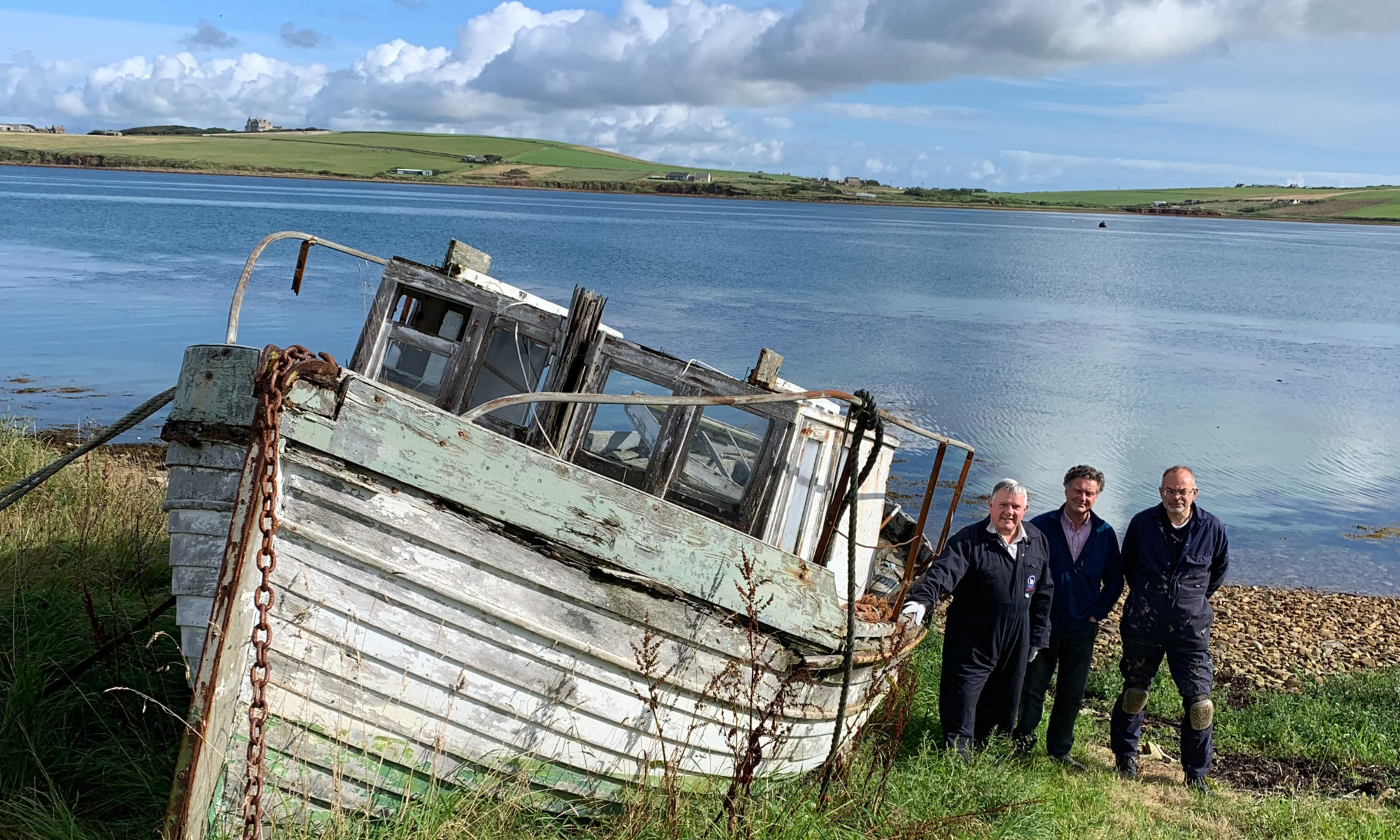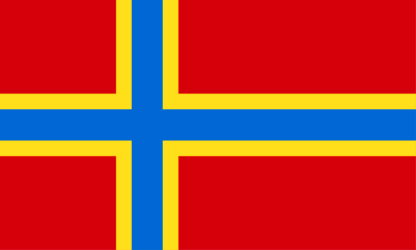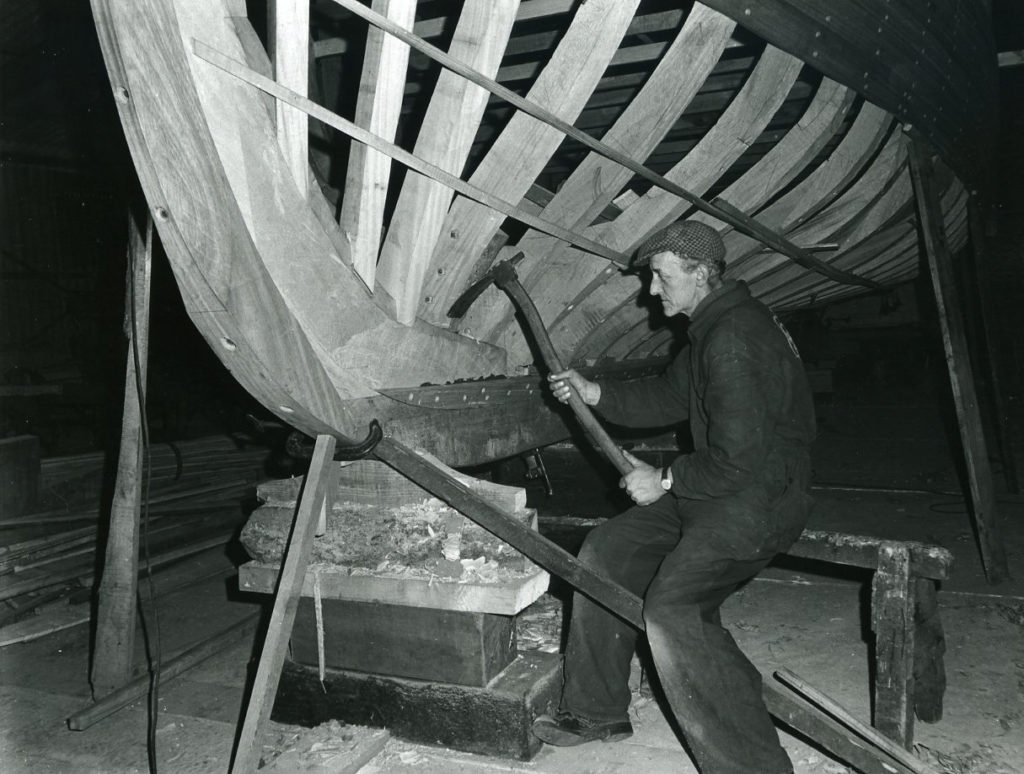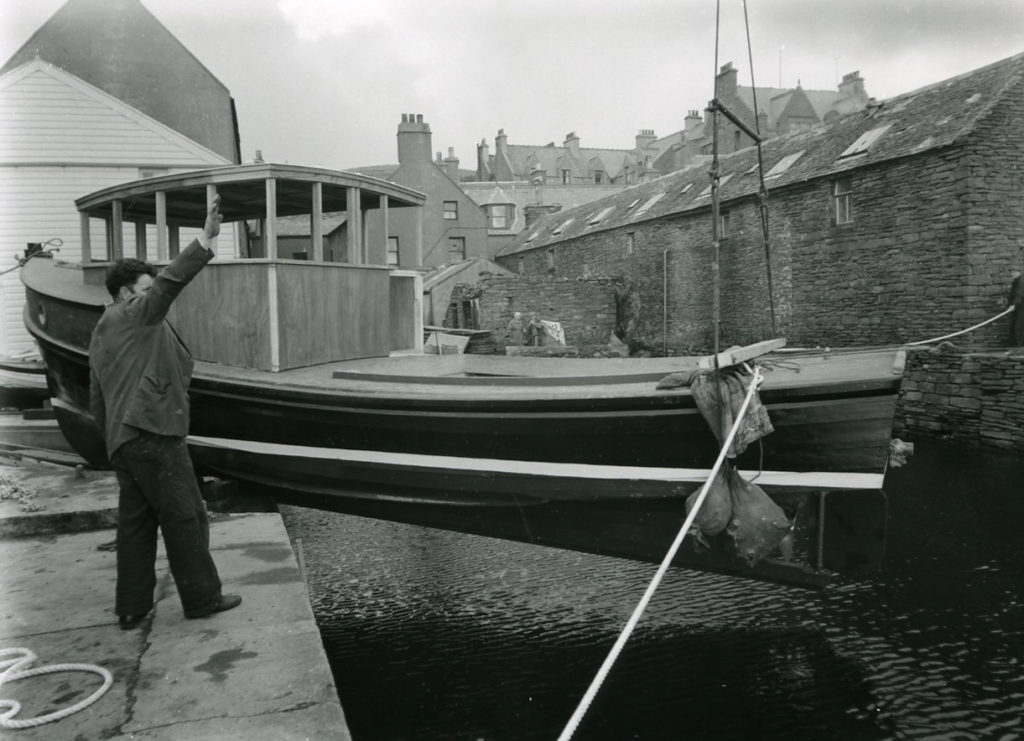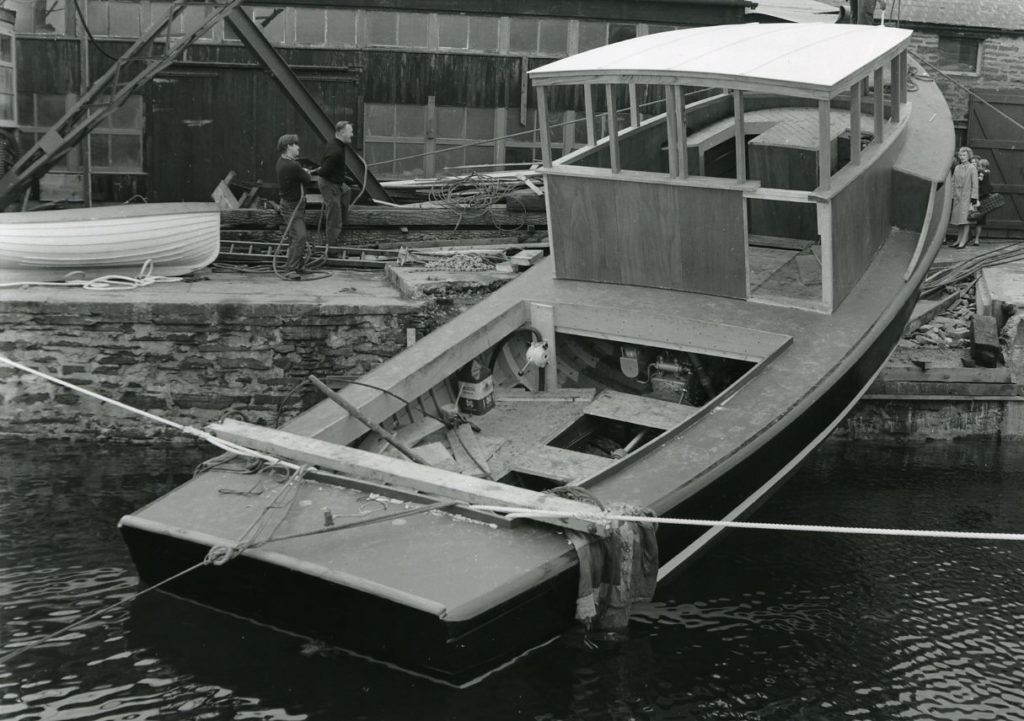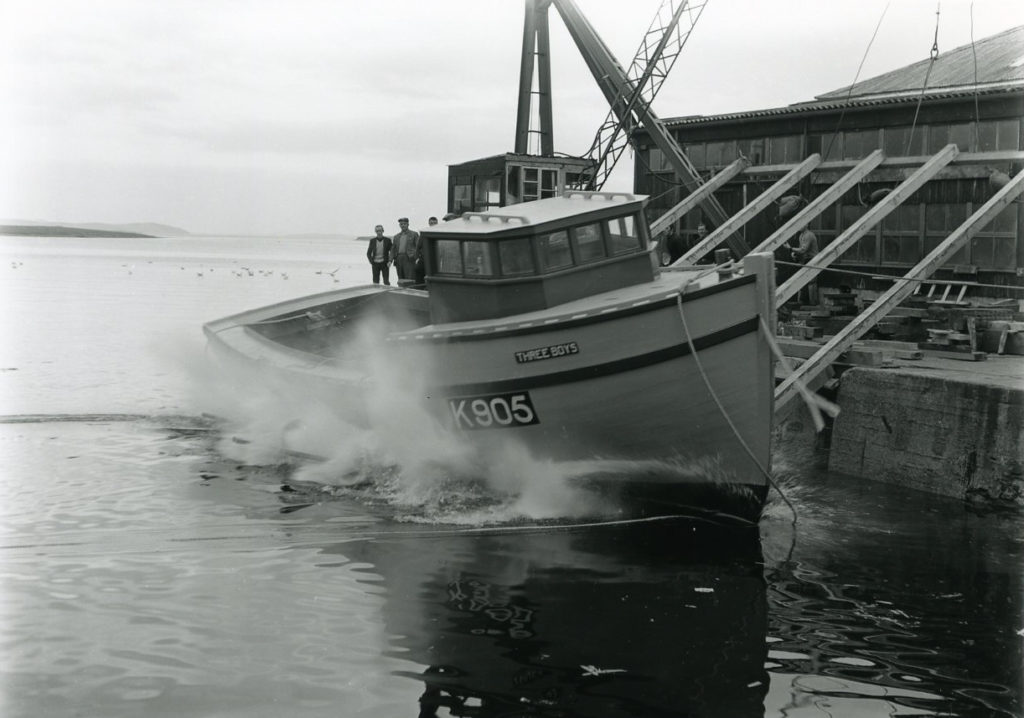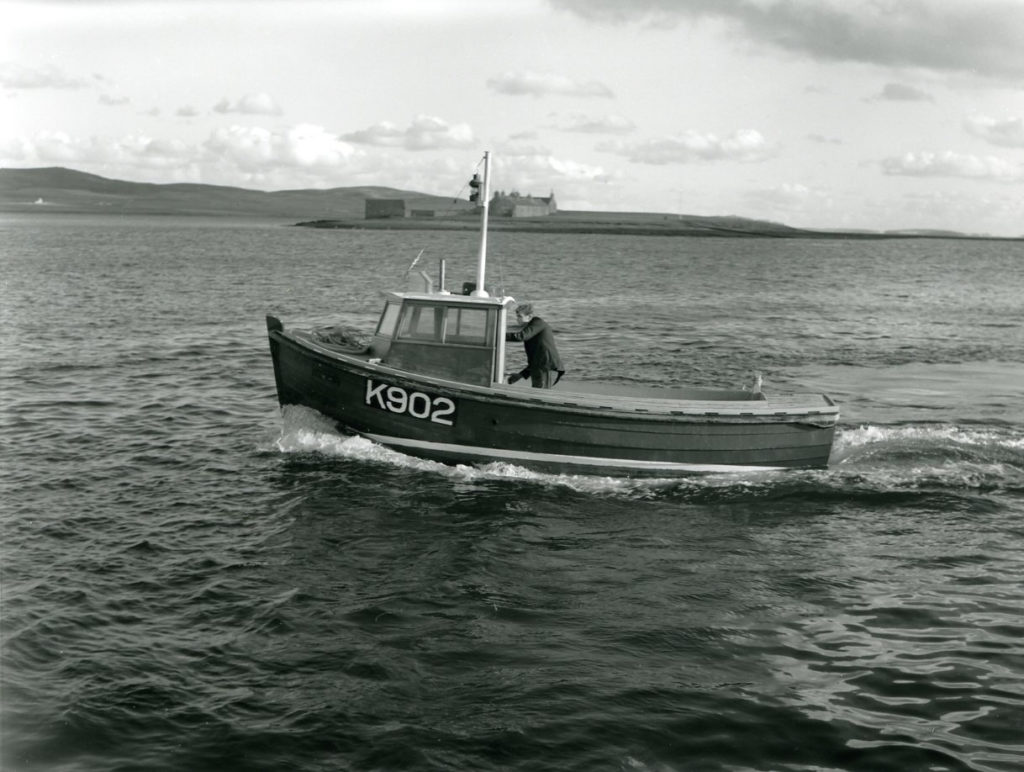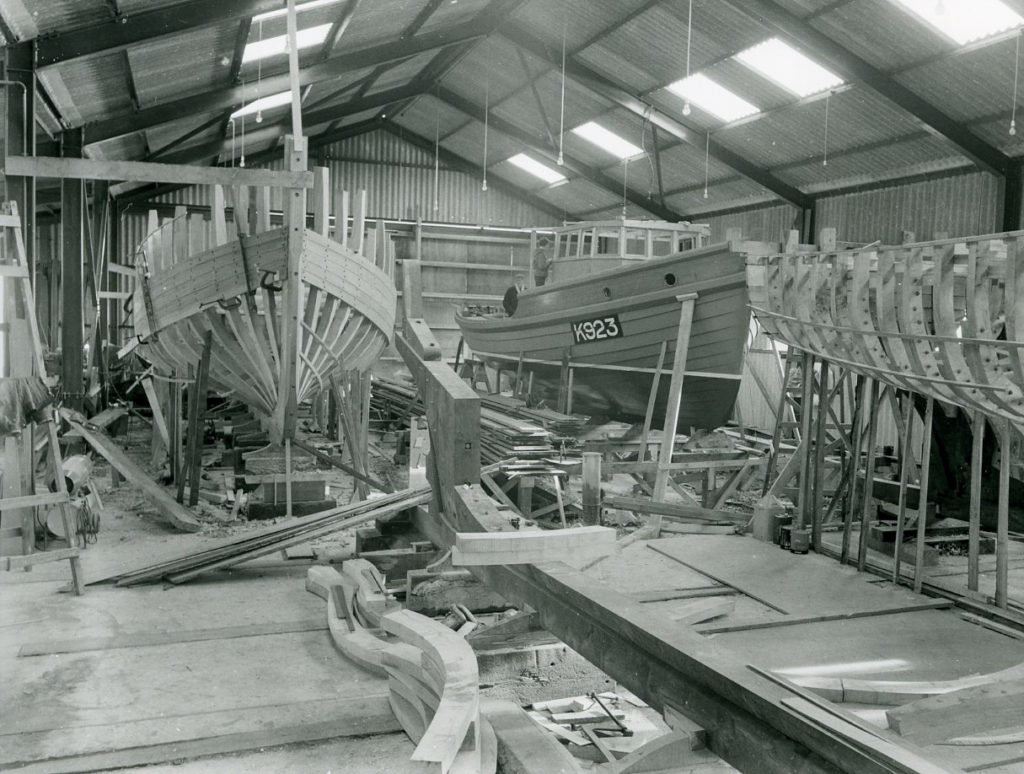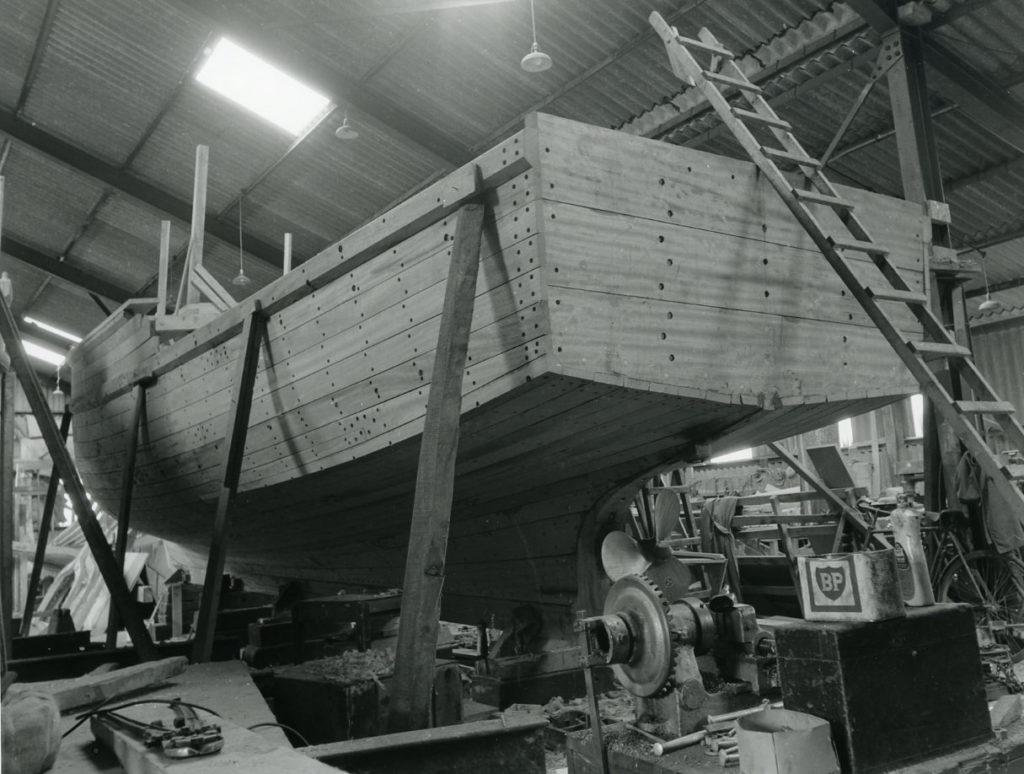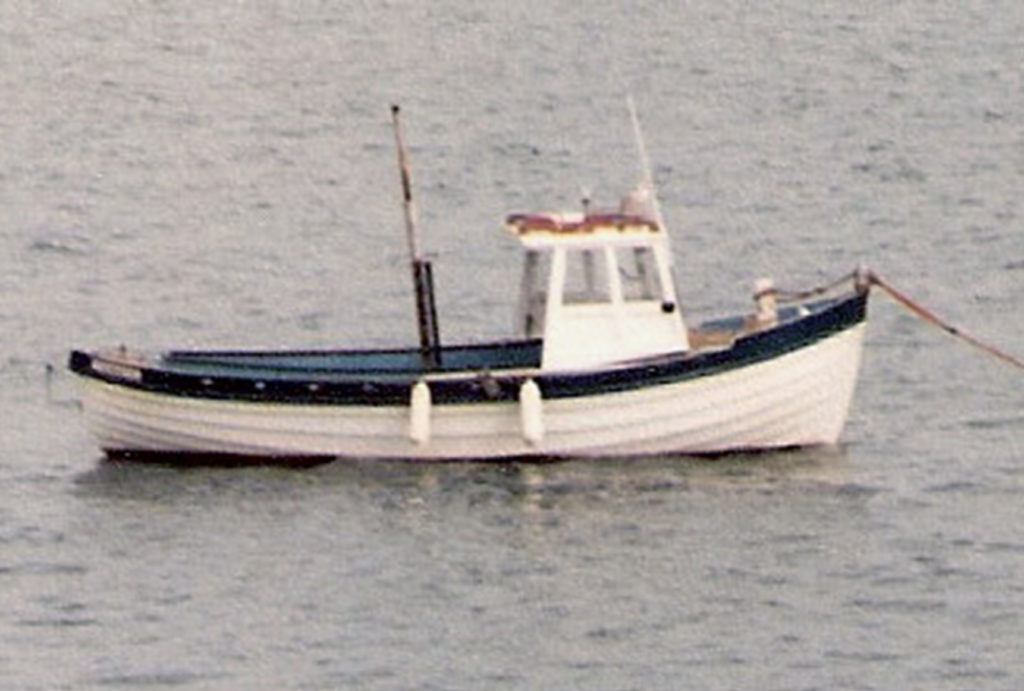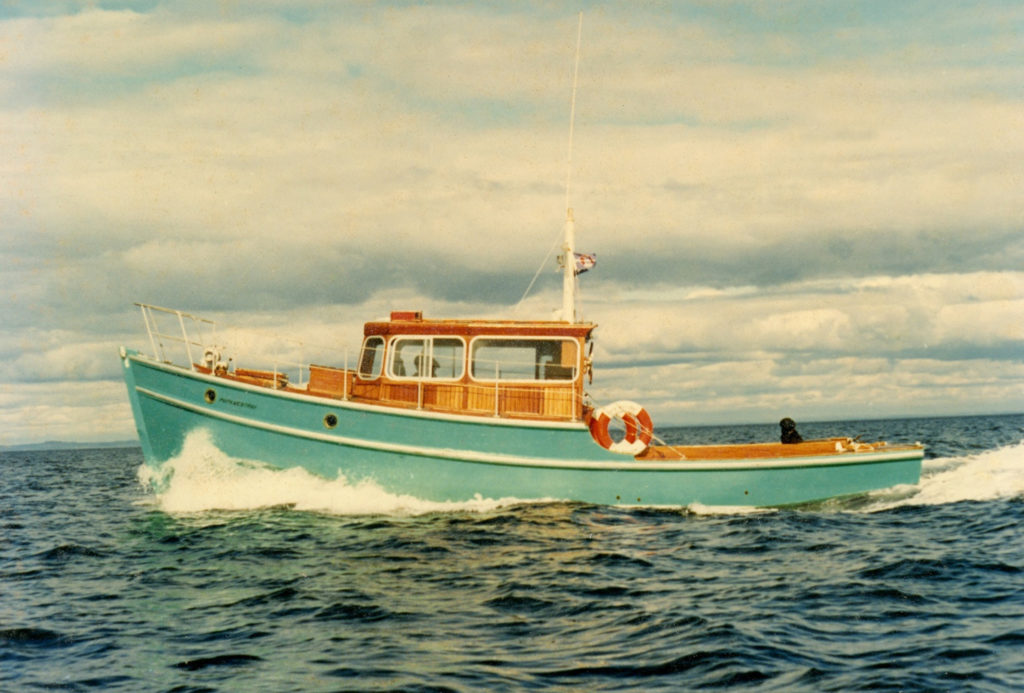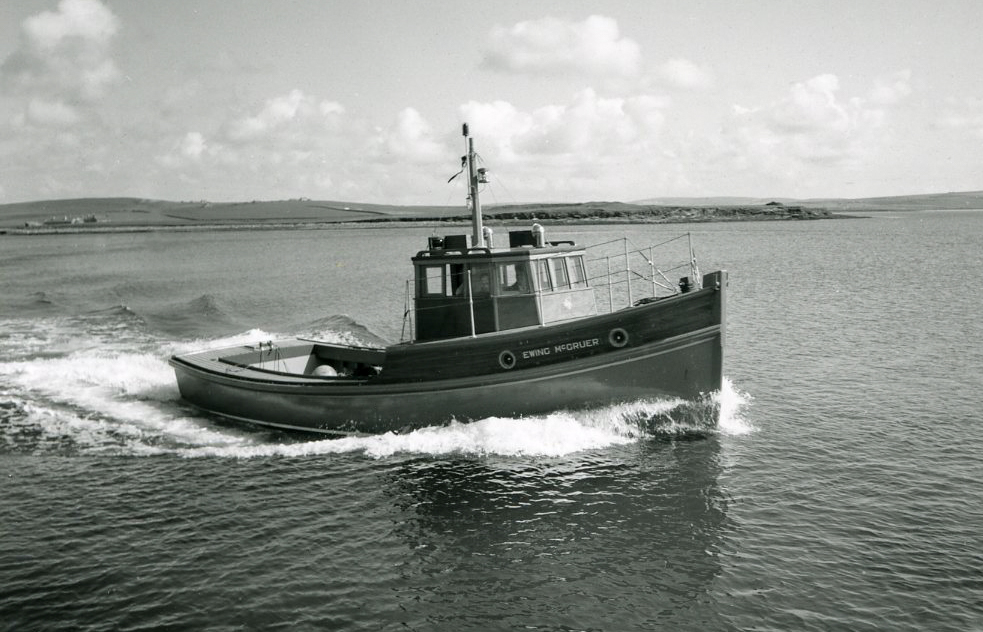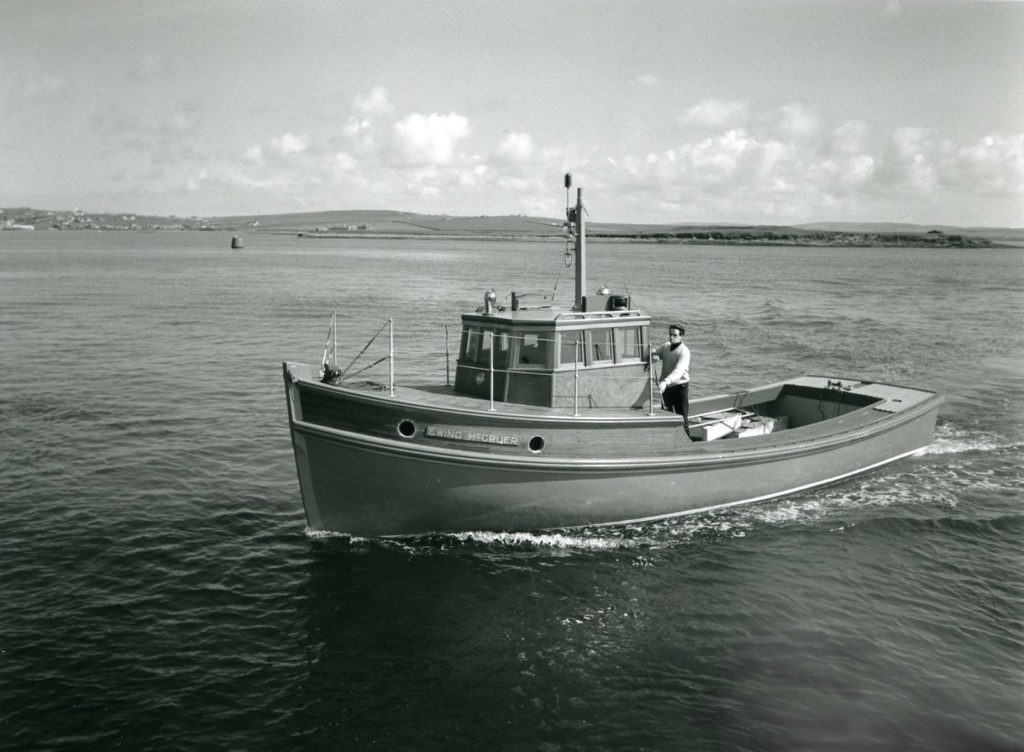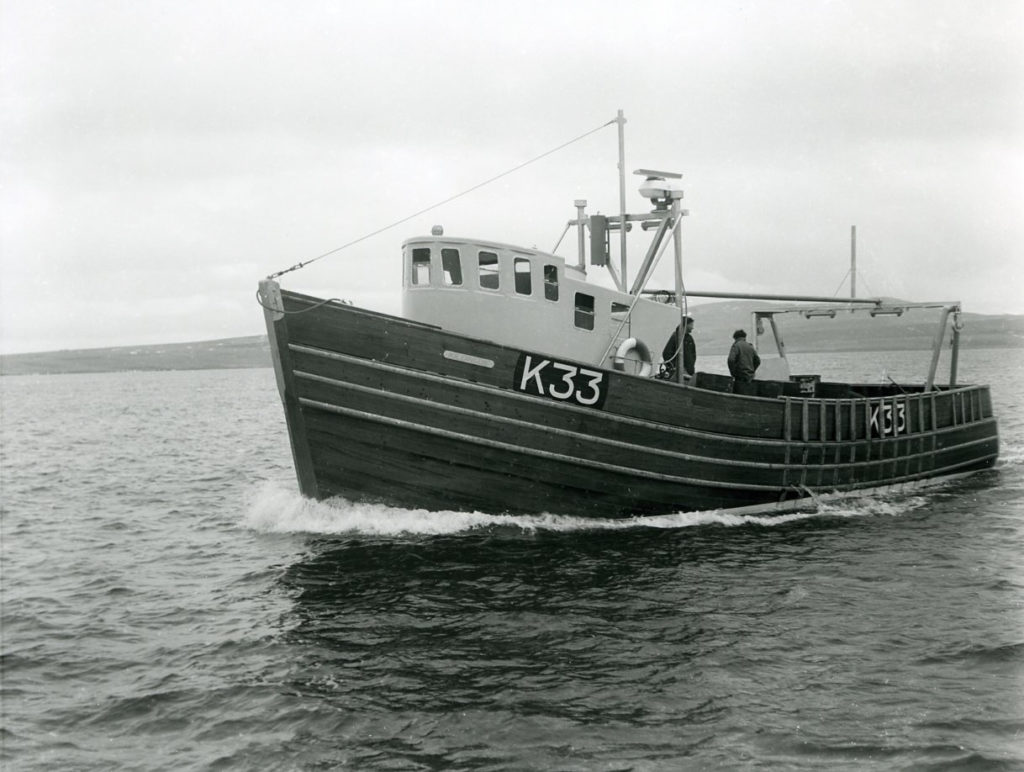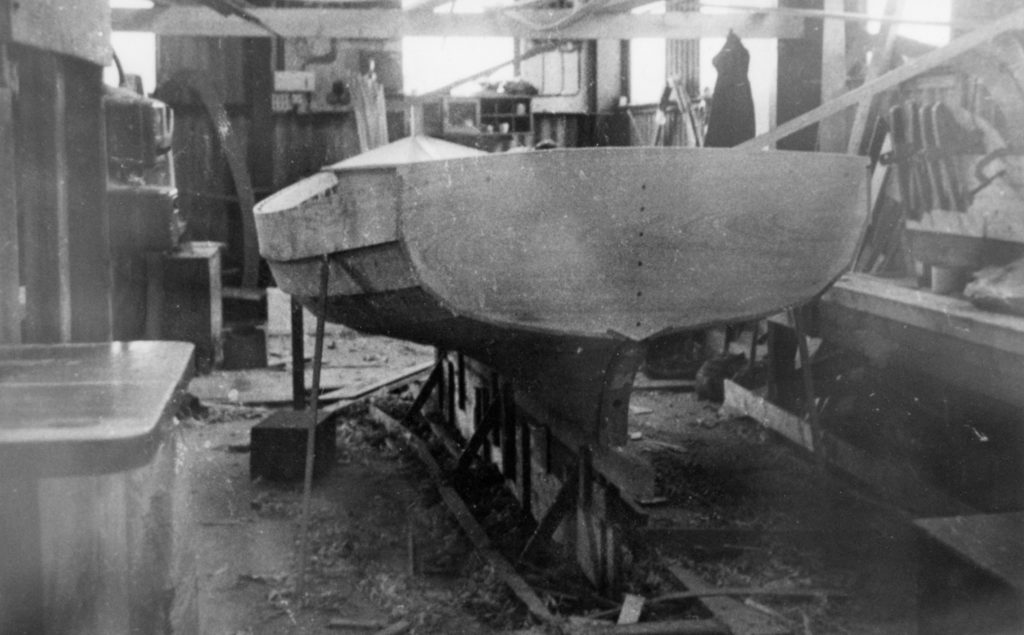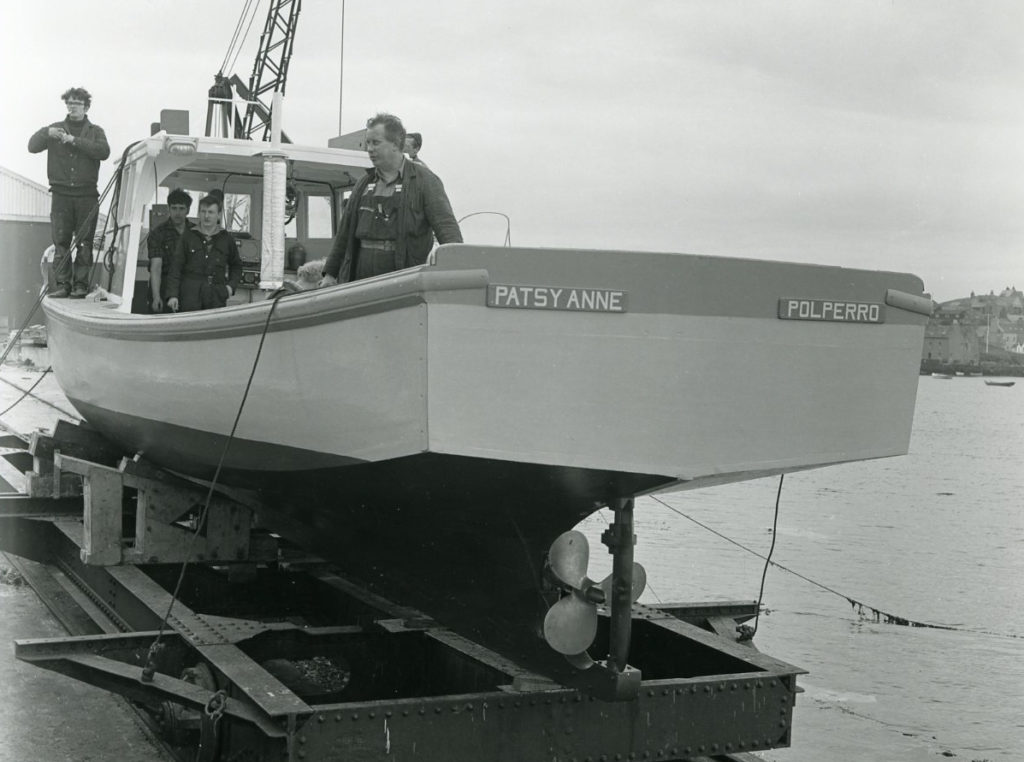Introduction
James Towers Anderson, known locally as Pia Anderson, established arguably the most famous boat building yard in Orkney.
In the heyday of wooden boat building in Orkney, during the 1950’s, 1960’s and early 1970’s, Pia Anderson designed and built much sought-after fishing boats which were commissioned from and sent to all parts of the UK establishing Orkney as the centre of excellence and the major provider of inshore fishing vessels. His designs were quickly adopted by other boat building yards not only in Orkney but also in Caithness and elsewhere.
Pia’s signature designs are still recognised throughout Britain as ‘Orkney’ boats.
The current James Anderson (young Pia) began boat building alongside his father (who, in his day was also called young Pia) which also set him on a lifelong career in boat building. We are truly fortunate because he has very kindly collated the following information to help OHBS establish the story of the ‘Pia Anderson boatyard’ — Jimmy Clouston, January 2021.
Pia Anderson
There have been 4 generations of Pia Anderson as far as I know.
No 1 was James Anderson, Skipper of the herring smack Pioneer. Hence the nickname ‘Pia’ and this has stuck with all.
No 2 James Anderson served his time at Stanger’s yard in Stromness as a shipwright.
No 3 James Towers Anderson. Bom in Johannesburg South Africa and migrated to Orkney at 6 months old.
No 4 myself (James Anderson)
James Towers Anderson went to school at Stromness academy and upon leaving served his time as a shipwright with his father in the business he started on his return from Africa. The business was J. Anderson, Woodworks, Stromness. Called up at the start of the Second World War and entered the army in the Royal Engineers and was based in Orkney. This lasted only a few months and he was put into the category of reserved occupations and resumed work with his father servicing vessels in the flow for the duration of the war.
At the end of the war, he went to Heriot Watt University in Edinburgh and finished up as a teacher of technical subjects and started work again in Orkney as an itinerant teacher in Orkney ending up permanently in Stromness Academy as Principal teacher of technical subjects. He had great success in this new career, but he hankered after his first love of building boats. He resurrected his father’s business (which shut down at the end of the war) while he still taught at the Academy and employed 1 man; Stanley Flett, a joiner from Dounby. The first boat built at the newly formed yard was a 14’ mahogany dinghy for Jackie Brown the then bank manager at the Bank of Scotland, next was one for Jackie Robertson Solicitor. The first fishing boat was the Mayflower for Alan Pirie a local fisherman.
Alan Pirie wanted a boat to carry a minimum of 150 creels so he could carry them and fish them on the north coast of the Scottish mainland and in the event of bad weather haul them aboard and run for shelter. My father took the remit and consulted his very good friend Ewing McGruer and between them they created what became known as the Mayflower design. The vessel was clinker built on 10 sawn frames amidships and steamed timbers elsewhere, she had a very heavy 8” x 6” gunwale stringer and a shaped 8” x 6” external belting to create a very strong sheer strake and prevent the hull twisting in bad weather. Large open cockpit aft and accommodation for 3 crew in a fore castle complete with galley. Power was by a 36 HP air cooled Lister main engine. By todays standard a pretty basic set up.
Next came the Albacora for the Sclater brothers of Sanday, the Zinnia built for Billy Thompson same vessel as Mayflower but with 48 HP main engine came next followed by the Scott for Messrs Cormack and McDonald.
The Clamhan Dubh came at this time and was the first Cusp transom to be built. Clinker as the Mayflower and based on the Mayflower design with the aft end 30% modified by the addition of the chine; this was a radical move at the time and was intended to enhance speed and stability, built for a Capt. Richardson of Ardgay and kept at Portmahomack in Ross and Cromarty.
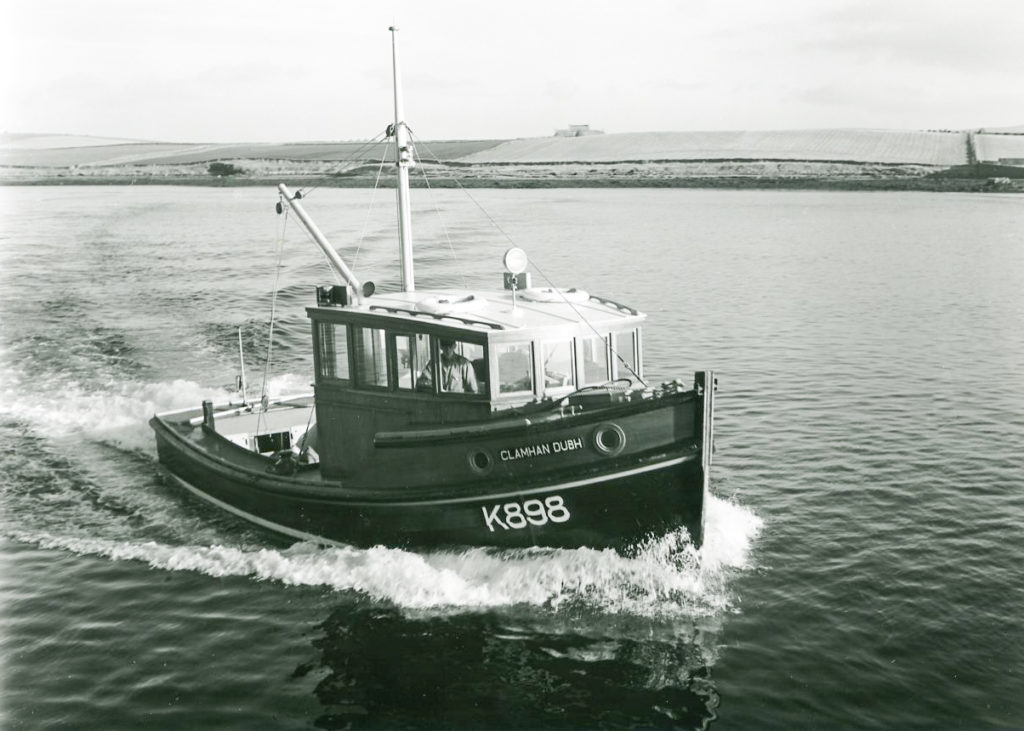
The 3 Boys came next for Angus (Ginger) Brown and was the first Mayflower to be built Carvel construction. Built on Iroko double sawn frames and larch planking.
At this time there was a reverse clinker ‘Folk Boat’ with a curved mast, built to a Ewing McGruer design for the boss of Riddoch of Rothiemay sawmills in Morayshire. This was the first boat our joint colleague Ian Richardson worked on.
There was about 9 persons employed and my father had given up teaching to concentrate on the business, previously the income from teaching helped support the business. During this time, we built many dinghies of all types for all over the UK and I recall one with a ‘lute’ stern for beach landing for somewhere in England.
There was the Marica built for Eric Lochre at 20’ and a Canal boat at 30’ at this time also. Added to that there were 4 or 5 unpowered landing craft built for farmers to transport animals to the islands; Also, we had a contract to supply a large number of creels to the Jamaican Government which had been funded by the Scottish development office in Edinburgh, these were made by local fishermen and crated up in the yard for shipment. Wilfred Marr took hundreds of photos of all these builds, launches, events and the shipping of the boats.
All the apprentices cut their teeth on dinghy builds and at one time I personally was building 3 x l4’ers every fortnight, they went to a sales room in Perth, can’t recall the name.
We then transition to the Point of Ness, Stromness
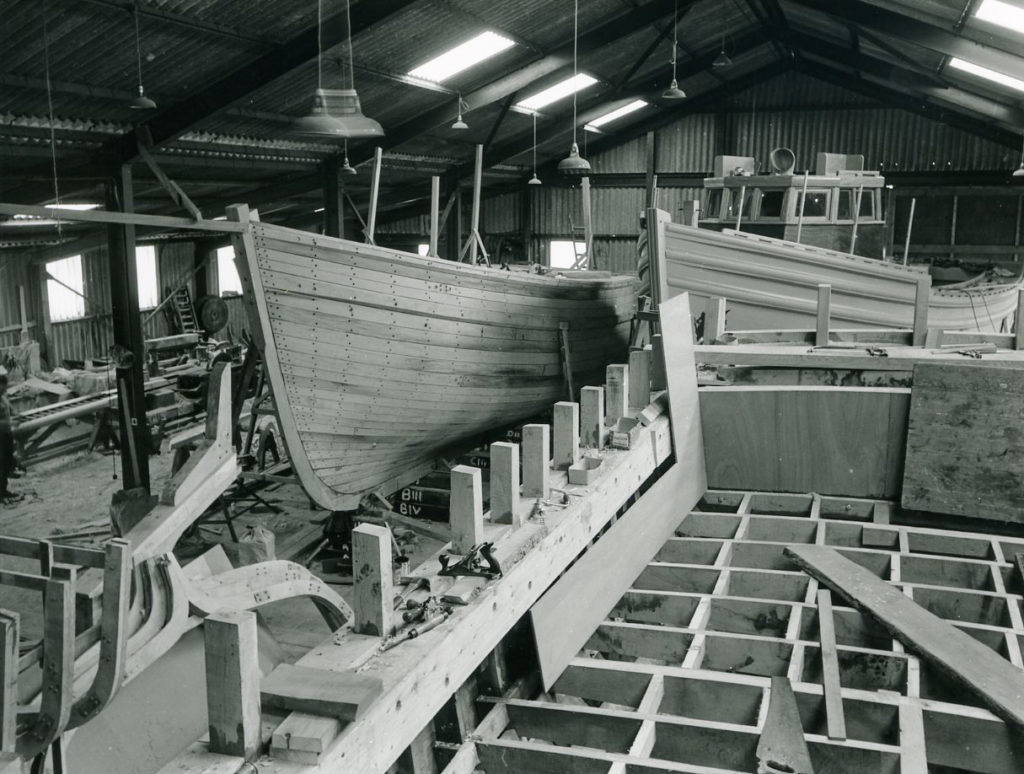
Once the move to Ness had happened the boats came thick and fast. The first to be launched was the Girl Wilma for a Wm. Mainland of Rousay, I cannot remember the precise build list but there was the Merlin 11 for W. Sinclair (Bilcum), Gunnhilda for the Norquoy Bros. St. Margaret’s Hope, Iris and Catriona for Skye.
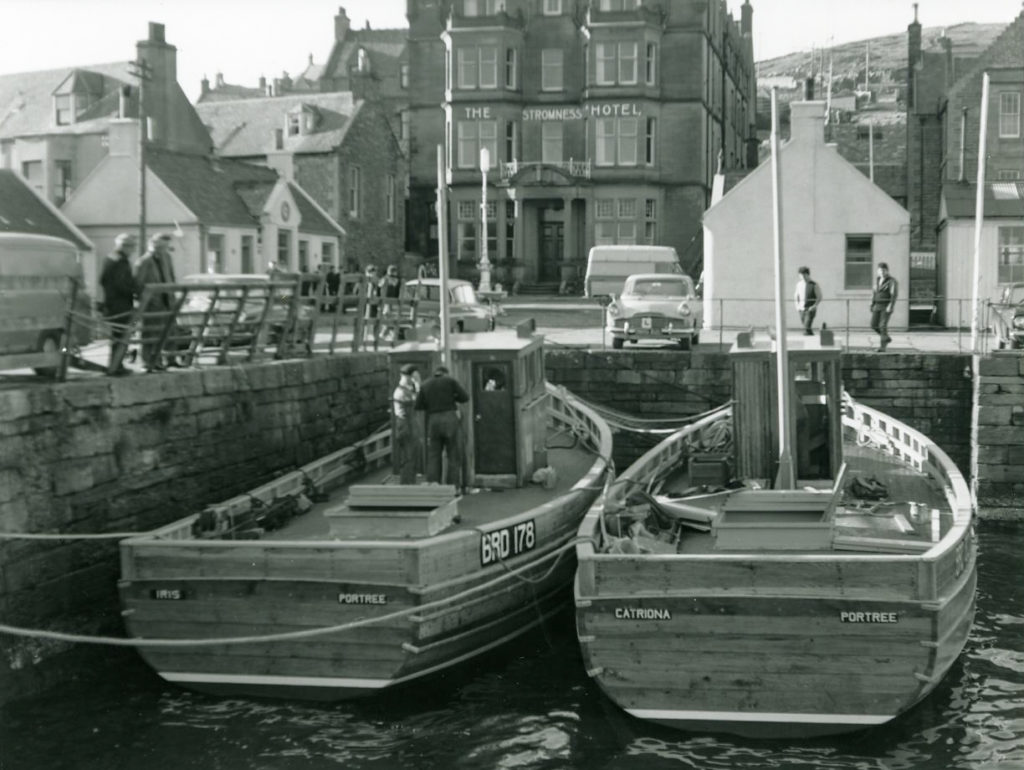
Sea Otter for Skye, Northern Isle for Sanday, Quest for Longhope, Tern for Wick, Clearway for Thurso.
Fairway for Thurso, Shalimar for Yell Shetland, Papa Westray for Troon.
Ewing McGruer for Tim Stout Westray.
Diana 11 for Stornoway.
Loch Inchard for Kinlochbervie, Kildinguie for Stronsay
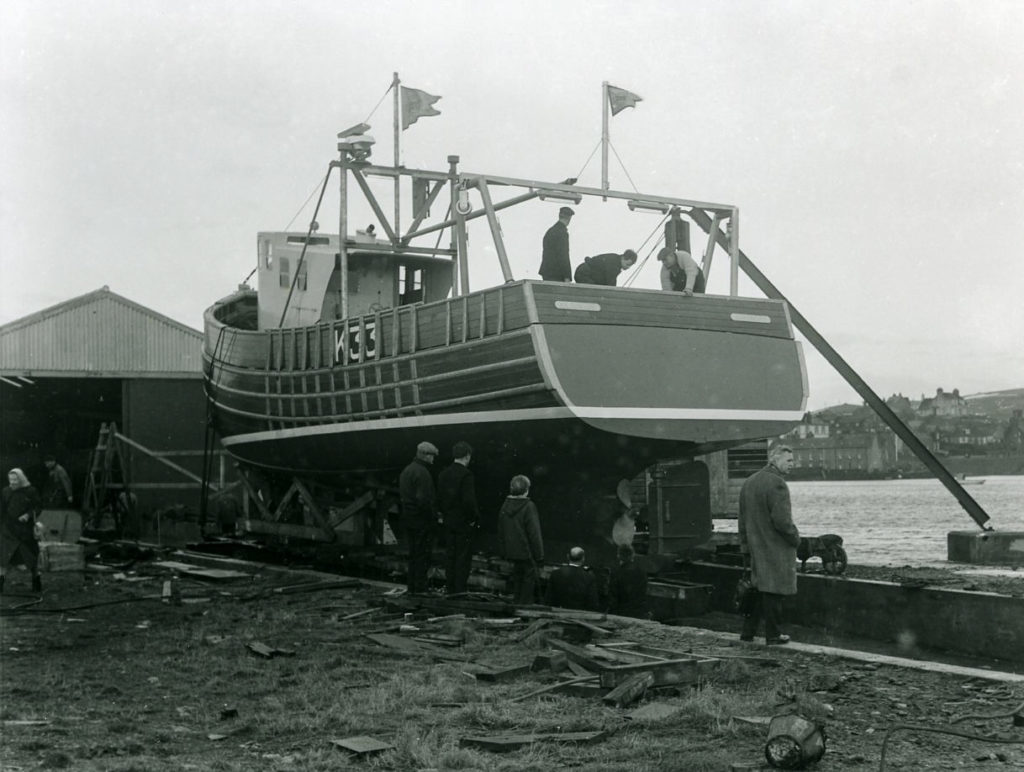
20+ 16’ motor boats for Alginate Industries for Tangle (seaweed) collection.
We also took the first Halmatic 50 to be fitted out as a trawler for ‘Red Robbie’ Watt of Lerwick. There was a second boat built for Geordie McGaughey of Wick, the Stroma Isle WK408, at this time he already had the Tern.
Patsy Anne, Ddriag Goch and Arun Venture, all off the Ewing McGruer model, 2 went to the south coast of England and the Ddriag Goch to Anglesey.
The Kedana for Joe Aitken of Buckie and Cluran were particularly pleasing for Pia. He was delighted to have won a contract to build a vessel and deliver to the very heart of the boatbuilding heartland of Buckie. My dad was as near as I ever saw him to being ‘smug’ when he got that order.
After the untimely death of my father at the age of 52, in September 1971, the Highlands & Islands Development Board (HIDB) allowed my mother and I to run the yard and after about a year they took over the running of the yard themselves putting a manager named Glyn Morris in to run the place. The yards name changed at this point to J. Anderson (Boatbuilders) ltd but within a couple of years that foundered.
Some local businessmen resurrected it in conjunction with the backing of the HIDB and named the business J. Anderson (Stromness) ltd, the manager was Capt. Olaf Work from Kirkwall. Scarth Engineering then bought out that business and closed the yard.
